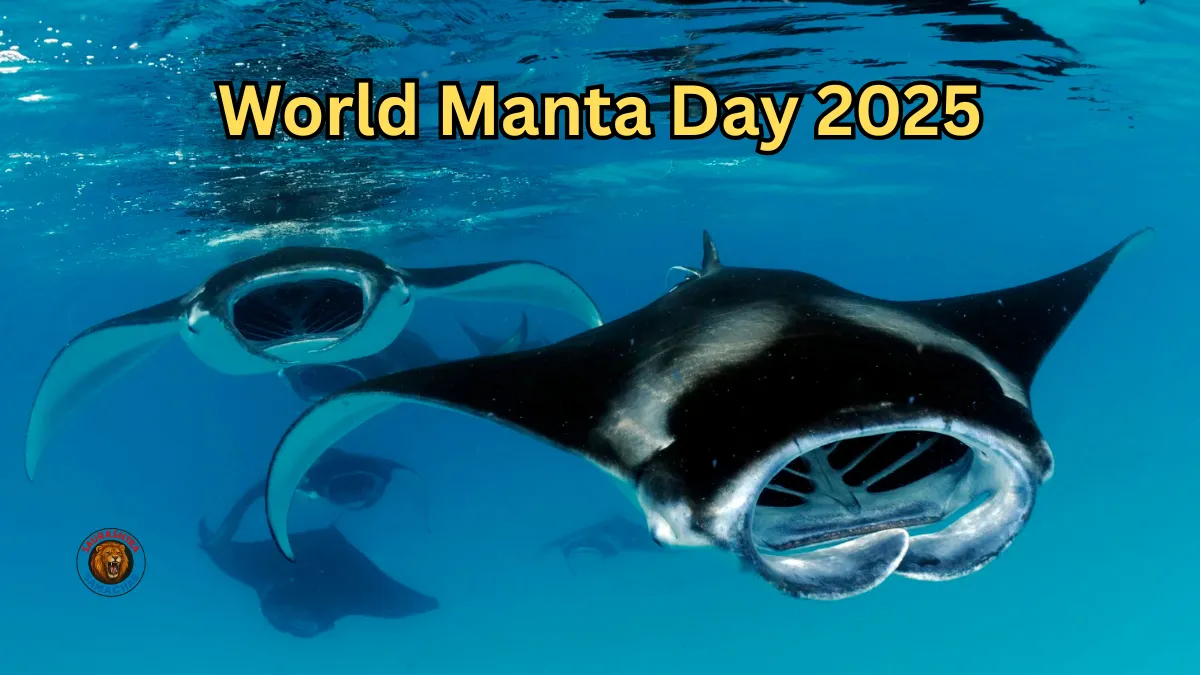World Manta Day is observed every year on September 17 to raise awareness about manta rays, their importance in marine ecosystems, and the urgent need to protect them from growing threats. Known as the “gentle giants of the ocean,” manta rays are highly intelligent, graceful, and crucial to the balance of ocean life. This special day inspires people across the globe to learn about mantas, support marine conservation, and contribute toward the survival of these fascinating creatures.
Why World Manta Day Matters
The ocean covers more than 70% of our planet, yet it remains one of the least explored ecosystems. Manta rays, with their enormous wingspans that can reach up to 7 meters, are among the most iconic marine species. Sadly, despite their peaceful nature, they face severe challenges from overfishing, pollution, and habitat destruction.
World Manta Day serves as a reminder to act before it is too late. By promoting education, sustainable tourism, and marine protection laws, this day brings international attention to manta rays and their fragile habitats.
The Theme and Message of World Manta Day
Each year, World Manta Day highlights a specific theme, focusing on issues like:
- Protecting manta ray habitats
- Ending the trade of manta gill plates
- Promoting sustainable diving and tourism
- Supporting research and conservation projects
The message remains clear: manta rays are not only vital for biodiversity but also symbols of ocean health. Protecting them ensures balance in the marine ecosystem and supports the livelihood of coastal communities dependent on eco-tourism.
Interesting Facts About Manta Rays
- Manta rays are filter feeders, consuming tiny plankton.
- They have the largest brain of any fish relative to their body size.
- Unlike stingrays, manta rays do not have a stinger, making them harmless to humans.
- They are known to recognize themselves in mirrors, showing signs of self-awareness.
- Manta rays often live for more than 40 years.
Key Details About World Manta Day
Here’s a quick overview to help you understand the significance of the day:
| Aspect | Details |
|---|---|
| Event | World Manta Day |
| Date | September 17 (every year) |
| Purpose | To raise global awareness and protect manta rays |
| Importance | Highlights the role of manta rays in marine ecosystems and promotes ocean conservation |
| Activities | Educational campaigns, beach clean-ups, conservation drives, sustainable diving events |
| Global Reach | Celebrated by divers, NGOs, marine biologists, eco-tourism groups, and ocean lovers worldwide |
How to Celebrate World Manta Day
- Learn and Share – Educate yourself and spread awareness about manta rays through social media or community programs.
- Support Conservation – Donate to NGOs working on marine life protection or volunteer for ocean clean-up projects.
- Eco-Friendly Travel – If you dive or snorkel, choose certified eco-tourism operators who follow sustainable practices.
- Reduce Plastic Use – Ocean pollution is a major threat; cutting down single-use plastic can make a huge difference.
- Be a Voice for Mantas – Advocate for stricter laws against overfishing and wildlife trafficking.
Also read: World Tourism Day 2025: Significance, Theme, and Global Celebrations
Global Efforts to Protect Manta Rays
International organizations and governments are stepping up to safeguard manta rays. They are listed under CITES Appendix II, which regulates their trade. Several countries, including Indonesia, the Maldives, and Peru, have declared manta rays as protected species. Marine sanctuaries and awareness campaigns are also helping reduce the threats these creatures face.
Also read: Aravali Jungle Safari Project Price: Entry Fee, Packages, and Stay Options”
Conclusion
World Manta Day is not just about celebrating the beauty of manta rays—it is about taking responsibility for their future. These gentle giants are indicators of ocean health, and their survival directly reflects the state of our seas. By spreading awareness, practicing sustainable habits, and supporting conservation initiatives, we can ensure that manta rays continue to thrive for generations to come.











